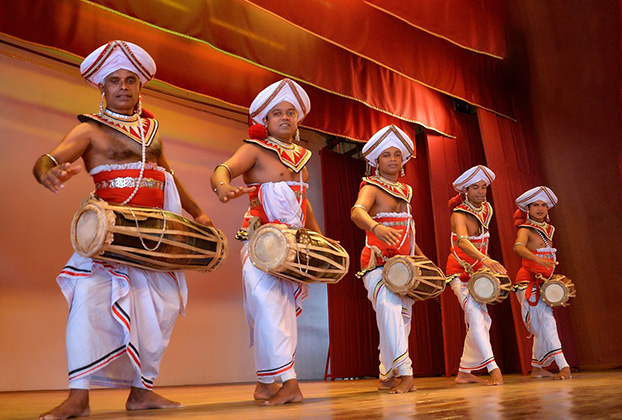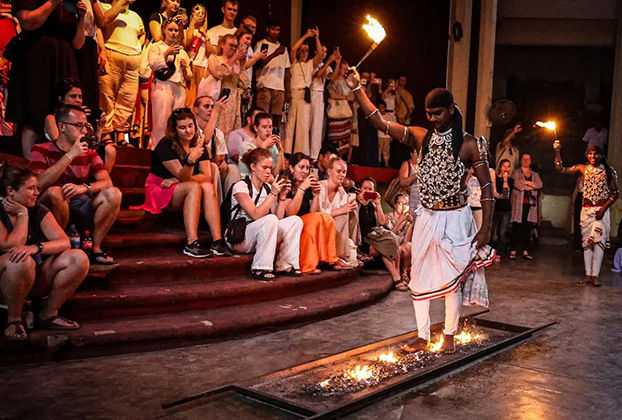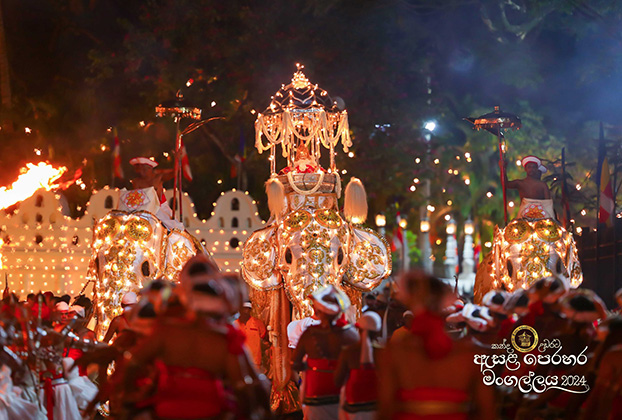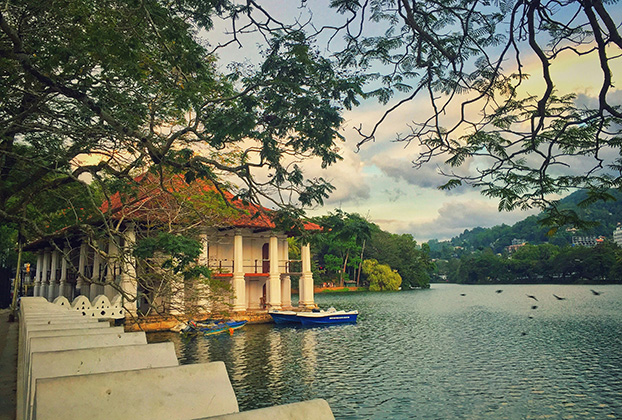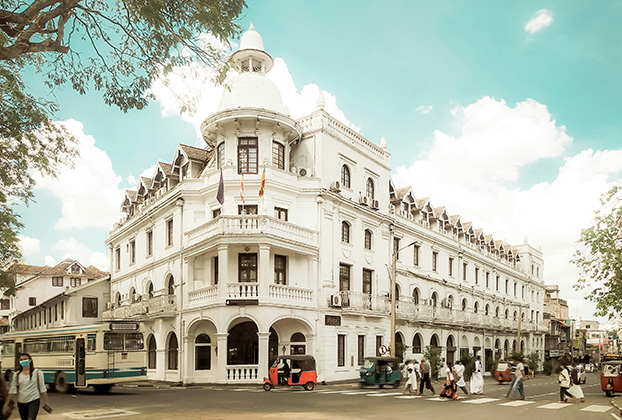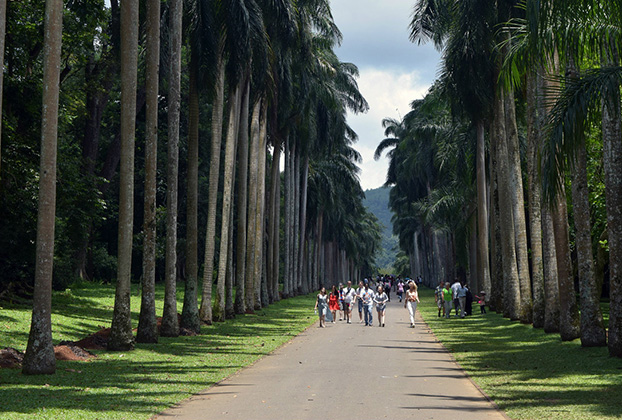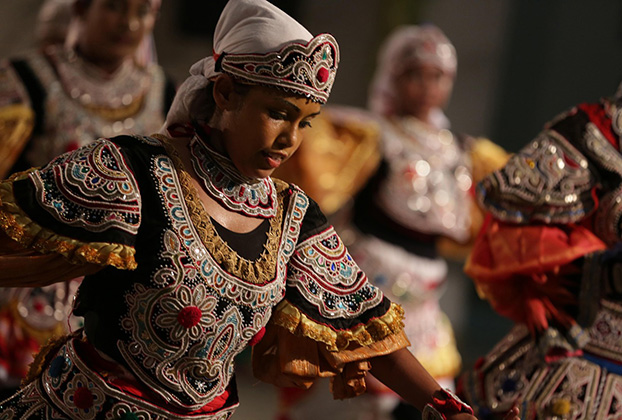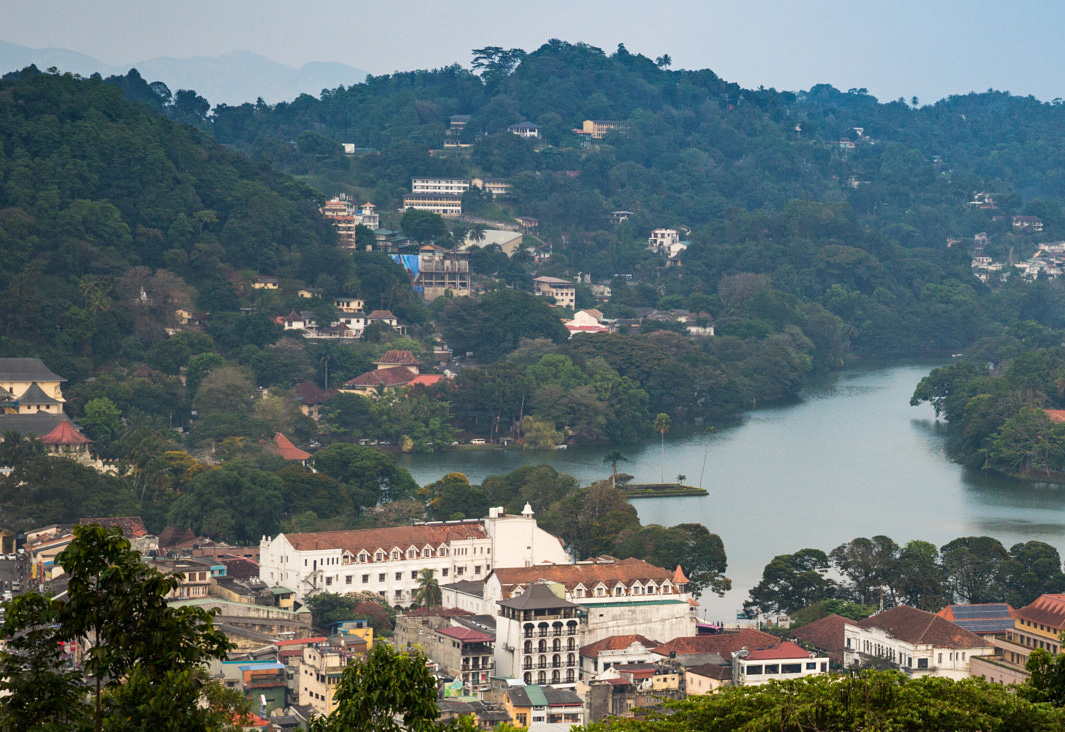
Kandy
The Cultural Heart of Sri Lanka
Nestled in the emerald hills of central Sri Lanka, Kandy is a city where history and nature intertwine. As the last bastion of the ancient Kandyan Kingdom, Kandy charms visitors with its serene lakefront, colonial architecture, and the revered Dalada Maligawa (Temple of the Tooth Relic), which houses one of Buddhism’s most sacred relics. Misty mornings unfold over lush tea terraces, while vibrant markets and winding paths invite exploration.
Kandy’s cultural vibrancy reaches a crescendo during the Esala Perahera, a spectacular torchlit procession featuring drummers, dancers, and majestic elephants adorned in lavish regalia. From the fragrant blooms of the Royal Botanical Gardens to panoramic hilltop views from the Bahiravokanda Buddha, Kandy offers an unforgettable blend of spiritual heritage and natural beauty.
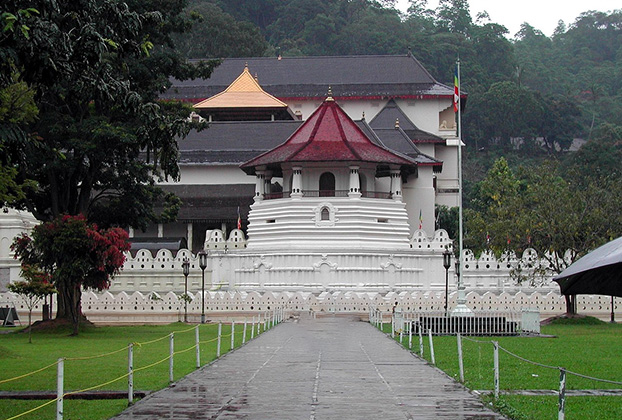
Top Things to See & Do
Dalada Maligawa (Temple of the Tooth Relic)
Witness daily Pooja ceremonies in this palace-like temple that safeguards Buddha’s sacred tooth relic.
Kandy Esala Perahera
Experience Sri Lanka’s most famous festival with torchlit parades, dancers, and elephants, held annually in July or August.
Royal Botanical Gardens (Peradeniya)
Wander through one of Asia’s largest tropical gardens, home to orchids, giant palms, and exotic flora.
Kandy Lake & Lake Walk
Enjoy a peaceful 2.5–3 km stroll around the tranquil lake, framed by greenery and colonial buildings.
Bahiravokanda Vihara Buddha Statue
Climb to this iconic hilltop statue for sweeping views over Kandy and its surrounding hills.
Traditional Cultural Show
Delight in vibrant Kandyan dance performances, including fire walking and live drumming.
Getting to Kandy from Colombo
By Car/Private Transfer: About 2–2.5 hours from Colombo (115–120 km) via the Kandy Expressway.
By Train: The scenic hill-country railway from Colombo Fort to Kandy is a must-do, offering stunning views of valleys and tea plantations. Book observation or first-class tickets in advance.
By Bus: Frequent bus services connect Colombo and Kandy; journey times vary.
Best Time to Visit
December to April: Peak season with dry, sunny weather perfect for sightseeing and outdoor activities. Expect more visitors.
May to July: South-West Monsoon brings intermittent showers and lush greenery; fewer crowds and better accommodation deals. The Esala Perahera usually falls in this period.
August to November: Inter-monsoon and North-East Monsoon onset bring heavier rains; the quietest time to visit with lower prices.
Travel Tips:
Layer clothing for cooler mornings and evenings. Carry a light rain jacket or umbrella during the rainy season. Wear comfortable, waterproof footwear for walking and hiking.
Local Tips & Insights
Dress modestly with shoulders and knees covered when visiting temples. Remove shoes and hats before entering shrines.
English is widely spoken in tourist areas; learning greetings like “Ayubowan” (hello) and “Suhada” (thank you) is appreciated.
Don’t miss a tea tasting session at a local factory to discover the art of orthodox tea processing.
Negotiate tuk-tuk fares gently; a typical 2 km ride costs around LKR 200–300.

